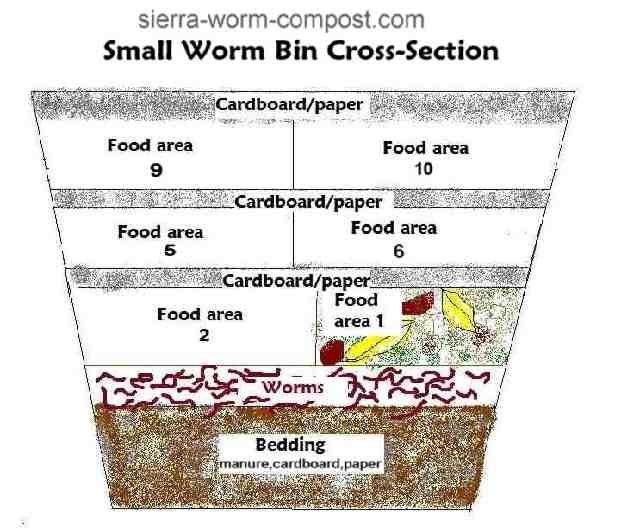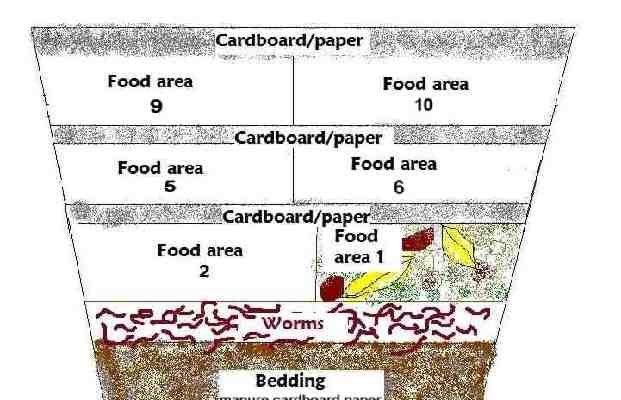
Today, we’re diving into what researchers have found about how temperature, food availability, and moisture levels affect worm behavior throughout the year. Along the way, we’ll discuss some practical tips that can help you get the most out of your worm bin, from spring to winter. Let’s dig into the world of worms!
Why Worm Behavior Matters in Composting
Worms play a vital role in breaking down organic matter and enriching the soil, so understanding their behavior helps us create better conditions for them. When we know how seasonal changes affect worms, we can adjust our composting techniques accordingly. It’s a bit like being a gardener for these little critters—understanding their needs means healthier worms and better compost.
For example, in warmer months, worms tend to become more active, eating and reproducing at a higher rate. Conversely, when temperatures drop, their activity slows down, and they might require extra care. When you are aware of these seasonal patterns, you can keep your worm bin healthy and productive all year round.
What Influences Worm Behavior Throughout the Year?
Several key factors influence how worms behave seasonally. Let’s explore these main elements and how they impact your worm bin.
Temperature Changes
Worms prefer a moderate temperature—ideally between 55°F and 77°F (13°C to 25°C). When temperatures rise above this range, they may start to feel stressed. During summer, you might notice that your worms are especially active, munching through scraps quickly.
In contrast, during winter, the temperature drop can slow their metabolism and make them less active. This slower pace means they’ll need less food than in warmer months. Keeping your worm bin insulated can help them survive the colder months and keep their pace steady.
Moisture Levels
Worms need a moist environment to thrive, but too much moisture can lead to problems like drowning or attracting pests. The seasonal changes in moisture can drastically affect your bin’s conditions.
In spring, as moisture levels increase with melting snow and rain, worms may thrive. However, summer heat often leads to dryer conditions. You might need to water your bin lightly to maintain a balance. In fall, as the rain returns, worms often become more active again, breaking down organic matter as they prepare for the chill of winter.
Spring: A Time for Rebirth
Spring is like a party for worms! With rising temperatures and increased moisture, it’s a time of activity and reproduction. You might find your worms getting busy—not just eating, but also multiplying. They thrive on organic matter like kitchen scraps, which becomes abundant as vegetable gardens begin to sprout.
To take advantage of this season, consider adding fresh food sources. You can introduce grass clippings, fruit peels, or vegetable scraps. Just remember to chop them up to make it easy for the worms to chow down. They’ll do their part in turning these materials into nutrient-rich compost!
Summer: The Heat and the Challenge
Summer brings heat, and with it comes the need for extra care in your worm bin. As temperatures climb, you’ll need to keep a close eye on moisture levels. If your bin gets too hot, the worms may become stressed and slow down their eating.
One way to combat the heat is to place your bin in a shaded area if it’s outdoors. If indoors, consider keeping it away from direct sunlight. Providing a bit of ventilation can also help keep the bin’s environment stable.
Moreover, it’s essential to feed your worms wisely during these months. They might not eat as much when it’s hot, so adjust how much you add to avoid overfeeding.
Fall: Preparing for Winter
As summer fades, fall presents a new set of opportunities and challenges. The warm days of early autumn can see a spike in worm activity as they consume the last harvests of the year. However, as temperatures begin to decline, you’ll want to prepare your bin for winter.
Start reducing food rather than dumping in large amounts. This will mimic their natural behavior of winding down for the season. Additionally, consider insulating your bin to protect the worms from cold temperatures.
Also, keep an eye on moisture levels. Fall can bring rain, but if your bin gets too soggy, your worms could drown. Make sure to mix bedding materials to strike a balance.
Winter: A Season of Rest
Winter can feel like a long pause for your worms. As they go into a sort of hibernation mode, their activity significantly decreases. You might be tempted to ignore the bin, but it’s essential to continue care.
Reduce feeding, as the worms will eat much less in the colder months. Instead, focus on maintaining proper moisture levels. Check regularly to ensure they’re not too dry or too wet.
If you live in a particularly cold area, you might even want to bring your worm bin indoors. This can help maintain a more stable temperature, keeping your worms safe and sound until spring arrives.
Understanding the seasonal behavior patterns of your worm bin worms can greatly enhance your composting experience. By adjusting food, moisture, and even the location of your bin according to seasonal changes, you’ll create a thriving environment for your worms. Think of it as being a mindful gardener, nurturing these little engineers of our ecosystem.
By being attuned to their needs throughout the year, you’ll not only produce better compost but also contribute to a healthier planet. So whether it’s spring, summer, fall, or winter, you now have the tools to keep your worm bin flourishing, no matter the weather outside. Happy composting!

